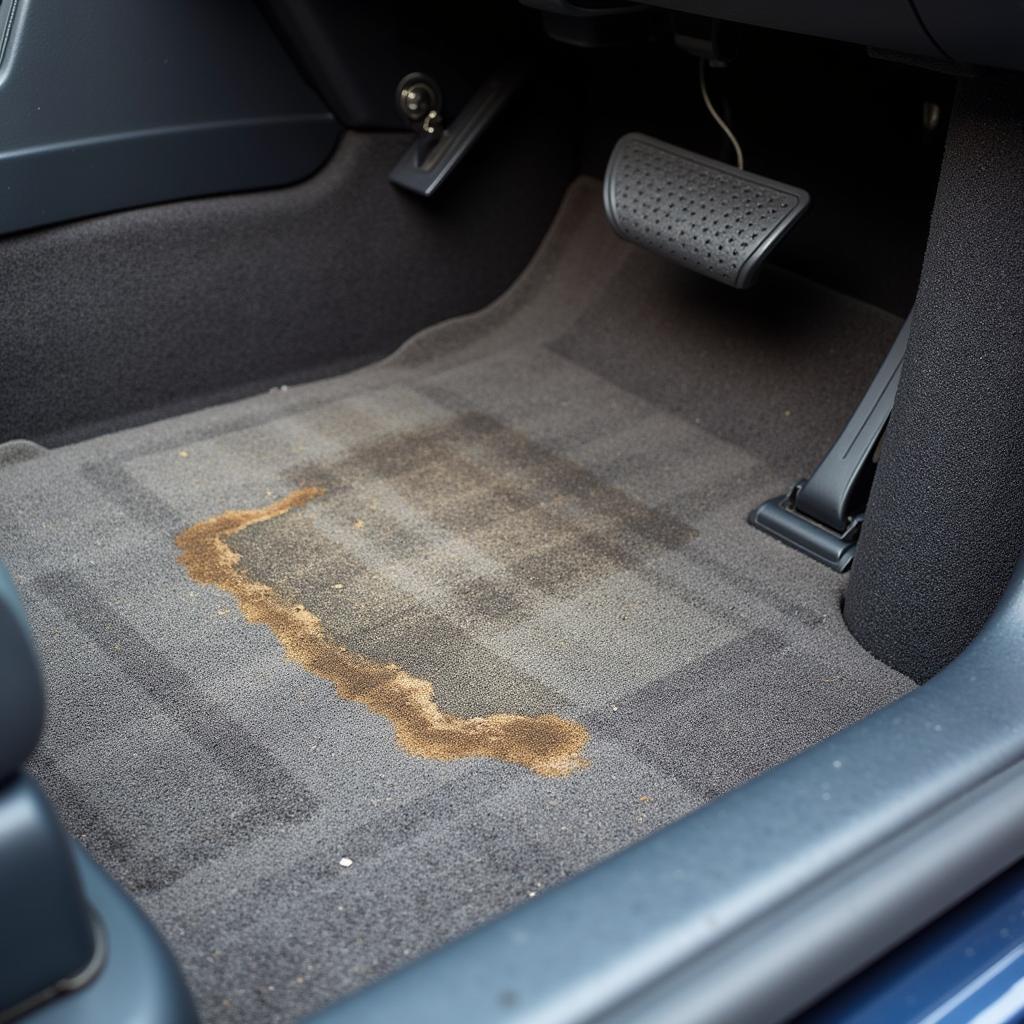Moisture inside your car can lead to a musty smell, foggy windows, and even electrical problems. This guide will show you how to identify the source of the moisture problem and provide step-by-step instructions on how to fix moisture problem in car effectively.
Identifying the Source of the Moisture
Before you can fix the moisture problem in your car, you need to figure out where it’s coming from. Several culprits could be causing excess moisture:
- Leaking Seals: Check the weatherstripping around doors, windows, and the trunk. Damaged seals can allow rainwater to seep into your car’s interior.
- Clogged Drain Holes: Cars have drain holes beneath the windshield and in the doorjambs. If these are clogged with leaves or debris, water can accumulate and cause moisture problems.
- Wet Carpets or Floor Mats: Spilled drinks or tracked-in snow can soak into the carpets and create a breeding ground for mold and mildew.
- AC System Issues: A malfunctioning air conditioning system can create condensation that doesn’t drain properly, leading to moisture buildup.
- Heater Core Leak: While less common, a leaking heater core can introduce coolant, which has a sweet smell, into the passenger compartment.
 Moisture Damaged Car Carpet
Moisture Damaged Car Carpet
How to Fix Moisture Problem in Car: A Step-by-Step Guide
Once you’ve identified the source of the moisture, you can take the following steps to fix the problem:
- Dry Out the Interior: Remove any wet items like floor mats and towels. Use a wet/dry vacuum to extract as much water as possible from the carpets and upholstery.
- Improve Ventilation: Open the windows and doors to allow fresh air to circulate. You can also use a fan to speed up the drying process.
- Address the Root Cause: If you’ve found a leak, repair it promptly. Replace damaged weatherstripping, clear clogged drain holes, or fix any issues with the AC system or heater core.
- Use a Dehumidifier: A dehumidifier can help remove excess moisture from the air inside your car. Place it inside the vehicle for several hours or overnight.
- Clean and Disinfect: Once the interior is dry, clean and disinfect all affected surfaces with a suitable cleaner to prevent mold and mildew growth.
Preventing Future Moisture Problems
Prevention is key to keeping your car dry and free of moisture-related issues. Here are some tips:
- Regularly Inspect Seals: Check the weatherstripping for damage and replace it as needed.
- Keep Drain Holes Clear: Periodically clean out the drain holes to ensure proper drainage.
- Use Floor Mats: Use high-quality floor mats, especially during rainy or snowy weather, to protect the carpets.
- Address Leaks Promptly: Don’t delay repairing any leaks, no matter how small they seem.
- Park in a Garage When Possible: Parking in a garage can help protect your car from the elements and reduce the risk of moisture buildup.
“Moisture can be a silent killer for your car’s interior,” says John Miller, a veteran automotive technician at Miller’s Auto Repair. “Addressing it quickly can save you from costly repairs down the road.” He also emphasizes the importance of regular inspections to catch potential problems early.
“Don’t underestimate the power of ventilation,” adds Sarah Johnson, an automotive engineer with over 20 years of experience. “Proper airflow can significantly reduce moisture buildup and prevent that musty smell.”
Conclusion
Fixing moisture problems in your car doesn’t have to be a daunting task. By identifying the source of the moisture and following the steps outlined in this guide, you can keep your car’s interior dry, comfortable, and free of mold and mildew. For further assistance or personalized advice on how to fix moisture problem in car, feel free to connect with us at AutoTipPro. Call us at +1 (641) 206-8880 or visit our office at 500 N St Mary’s St, San Antonio, TX 78205, United States.




Leave a Reply